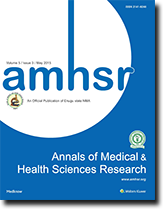

Background: Self-administered outpatient antimicrobial treatment (S-OPAT) program teaches patients to administer intravenous antibiotics themselves at their own home. Prior studies have shown that patients successfully complete S-OPAT, with a high satisfaction rate and substantial cost savings for the health system. The question remains if transition of care from hospital to home and from health care provider to self-care, results in increased utilization of emergency department (ED) services due to unmet needs. This is especially pertinent as interest in adopting S-OPAT is growing, especially in resource poor settings and countries. Objective: Determine usage of emergency care by patients who self-administered intravenous antibiotics at home. Methods: The study was conducted at Parkland Hospital, a large safety-net hospital serving Dallas County, Texas that has operated an S-OPAT clinic since 2009. We conducted a retrospective review of electronic medical records of 944 S-OPAT patients from our previous study between fiscal years 2009-2013, and determined emergency department (ED) visits and hospital admissions due to OPAT-related causes. Results: 944 patients were treated with S-OPAT. Patients were more likely to be male (62%), non-English-speaking (37%), lack insurance (61%), and have diabetes (21%). Of the 944 patients on S-OPAT, 99 patients (10.5% of the total cohort) presented at least once to the ED for S-OPAT-related causes. Fifty-one patients (5.4% of the total cohort) were admitted to the hospital, with a mean length of stay of 8 days. Conclusions: Our analysis confirms that transferring patients from hospital to home for self-administration of intravenous antibiotics is not associated with a compensatory increase in ED visits related to antimicrobial treatment.
Select your language of interest to view the total content in your interested language
Annals of Medical and Health Sciences Research received 24805 citations as per google scholar report
 The Annals of Medical and Health Sciences Research is a monthly multidisciplinary medical journal.
The Annals of Medical and Health Sciences Research is a monthly multidisciplinary medical journal.